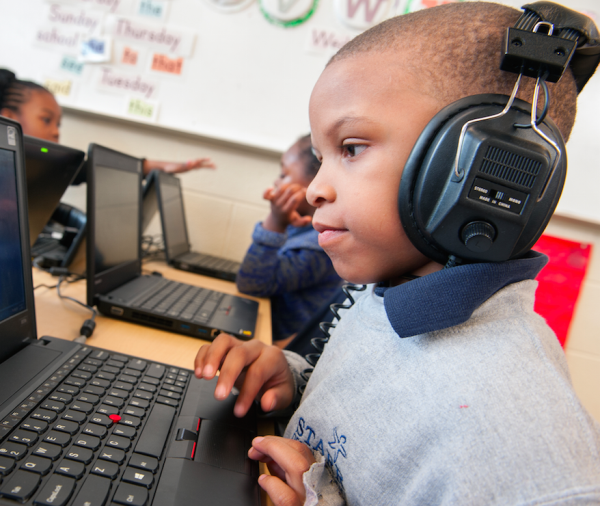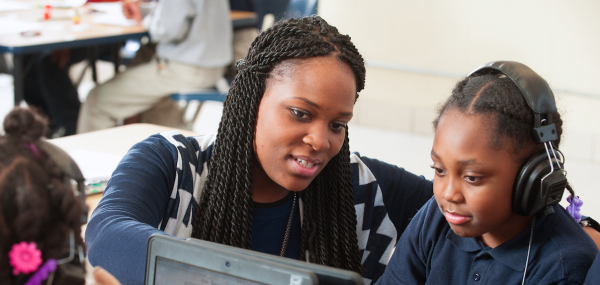
You have decided to implement a blended learning program. …. I pause so you can repeat that statement and confirm your decision. Success is not guaranteed; there are plenty of well-intentioned organizations that have failed mightily. In fact, I would argue that failure is guaranteed. Success will be defined by how effectively you respond to those failures.
As the founding principal of Starr Detroit Academy, I believe that an effective blended learning framework will improve student achievement by providing differentiated instruction. I also believe that effective online computer-based programs enhance teacher effectiveness — by providing individualized student practice and immediate feedback to students and teachers. These programs do not and should never be considered a replacement for teachers! In my experience, ineffective teachers are made more ineffective in a blended learning classroom.
We launched our blended learning program at Starr from day 1, and I will tell you for the first few weeks and months, we stunk. That being said, we didn’t give up and toss the computers in the closet to collect dust. Our teachers and leaders sat down and put a plan together on how to effectively implement the programs. At the core of our plan was how we would create a climate that maximized blended learning. We focused on the following areas:

During year 1 at Starr, we defined our program and communicated that vision to staff, but failed when it came to our rollout and implementation. We struggled mightily with the IT and operations. We quickly partnered with Clever to solve the user setup for many of the programs and outsourced our IT to a third-party management company, which eliminated our sluggish Internet. While we struggled through operational issues, we had early adopter teachers becoming program experts in the core programs. When we re-launched the programs, we used our teacher leaders to serve as advocates and to support reluctant staff.
Effective professional development also is critical for any implementation. We are asking teachers to both think and perform differently; therefore, we need to consider change management strategies to overcome resistance. When planning for PD, make sure to consider the following:

At Starr we employed a combination of in-person PD and online webinars. Effective implementation was tied to both the quality of the PD available and the timing of the PD. We trained staff in a variety of programs prior to the start of the school year. As we entered the year, we realized that our teachers were struggling to implement the program effectively. Students were making minimal progress, data was not effectively being tracked, and the program was not supporting our overall school mission. We reached out to one of our providers, MIND Research Institute, which offered an in-person trainer to work with our staff on ST Math. Immediately after the training, teachers became invested in improving their use of ST Math, and our students went from making minimal gains to achieving impressive growth. In partnership with MIND Research we conducted a study which found that our students made 1.5 x the expected growth on NWEA. The NWEA is a national normed assessment which allows us to measure our growth and performance against students across the country.
We did not start with all the answers, and we still have a long way to go to meet our goal of 100 percent of our students being college-ready by the time they graduate high school. Creating a school climate that embraces and maximizes blended learning has been a key component of our student growth. Our startup was rough, filled with potholes and wrong turns, but we remained reflective and continued to refine and improve our program. I wish you the best of luck as you launch your blended learning program.

Jeremy Vidito is the Executive Director of Strategic Planning & New Schools at Starr Commonwealth Educational Services.
Comment